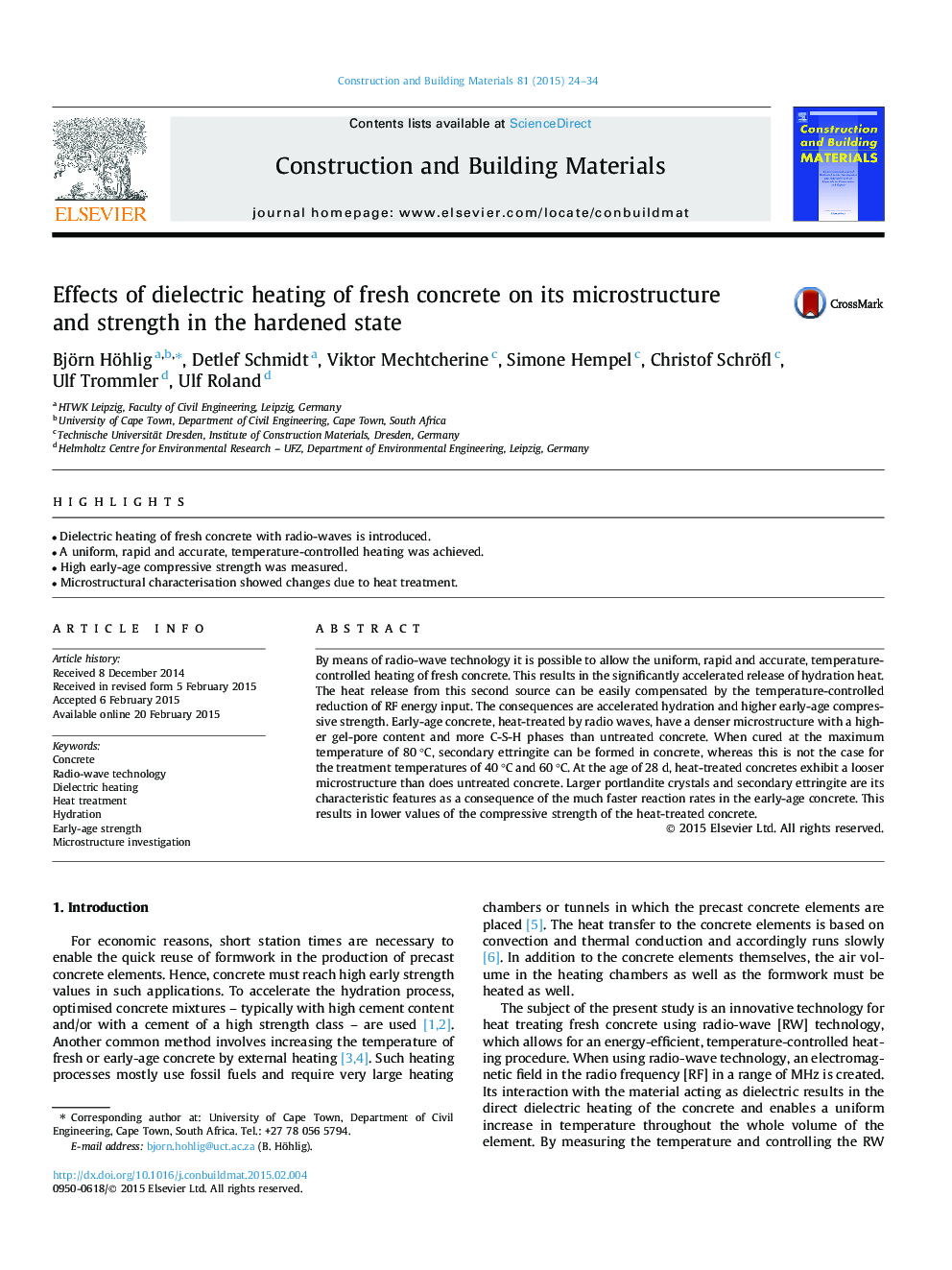| Article ID | Journal | Published Year | Pages | File Type |
|---|---|---|---|---|
| 6721113 | Construction and Building Materials | 2015 | 11 Pages |
Abstract
By means of radio-wave technology it is possible to allow the uniform, rapid and accurate, temperature-controlled heating of fresh concrete. This results in the significantly accelerated release of hydration heat. The heat release from this second source can be easily compensated by the temperature-controlled reduction of RF energy input. The consequences are accelerated hydration and higher early-age compressive strength. Early-age concrete, heat-treated by radio waves, have a denser microstructure with a higher gel-pore content and more C-S-H phases than untreated concrete. When cured at the maximum temperature of 80 °C, secondary ettringite can be formed in concrete, whereas this is not the case for the treatment temperatures of 40 °C and 60 °C. At the age of 28 d, heat-treated concretes exhibit a looser microstructure than does untreated concrete. Larger portlandite crystals and secondary ettringite are its characteristic features as a consequence of the much faster reaction rates in the early-age concrete. This results in lower values of the compressive strength of the heat-treated concrete.
Related Topics
Physical Sciences and Engineering
Engineering
Civil and Structural Engineering
Authors
Björn Höhlig, Detlef Schmidt, Viktor Mechtcherine, Simone Hempel, Christof Schröfl, Ulf Trommler, Ulf Roland,
